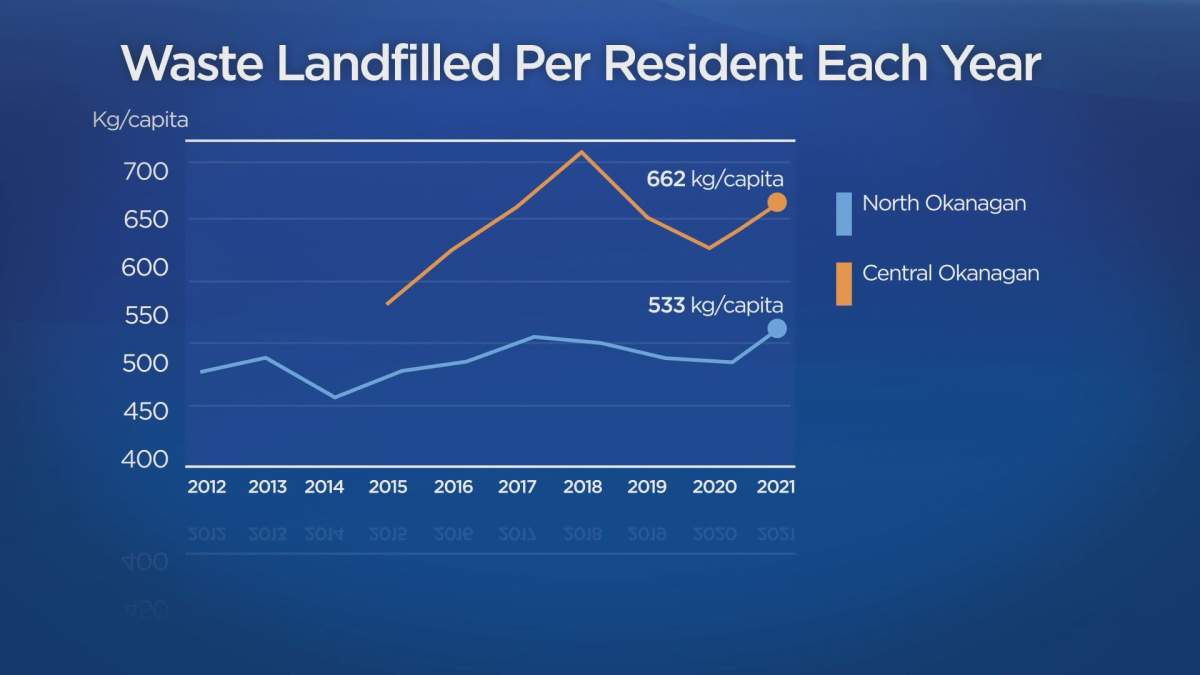Two Okanagan regional districts in B.C.’s Interior say the amount of trash headed to the landfill increased last year and the COVID-19 pandemic may be at least partly to blame.

Officials say dumps saw more waste from people cleaning out their homes and renovating during the pandemic.
“Plus there was a lot of economic activity in the region. There was a lot of homes being bought, lots of renovations so there was lots of construction and demolition materials.”
The increase in waste being landfilled in the North Okanagan occurred even though the amount of trash that was diverted from the dump through regional district programs also increased. The diverted material was recycled, repurposed or composted.
North Okanagan data shows, per capita, residents produced 533 kg of garbage last year. That’s a higher per-capital rate than at any time in the last decade.
Meanwhile, Central Okanagan landfill rates were also up in 2021 to 662 kg per person after declining in 2020.
The fluctuation in the Central Okanagan can be partially explained by two different pandemic trends: the regional district said during COVID residential waste was up likely due to more renovations and clean-ups but restrictions and closures meant less industrial, institutional and commercial trash.
There was also a rise in the disposal of construction materials last year in the Regional District of Central Okanagan.

Get daily National news
In the North Okanagan, Schubert doesn’t expect last year’s increase in garbage headed to the landfill to continue.
“The numbers are down this year and that’s a result of people not having a basement that needs to be cleaned out. We do think it is a blip and our numbers are going to be down,” Schubert said.
To try to keep driving the landfill rate down, the Regional District of North Okanagan is now targeting organic waste and urging residents to do their part to divert garbage.
That will ultimately help extend the life of local landfills, including the landfill near Vernon which is currently expected to be full in less than 40 years.









Comments